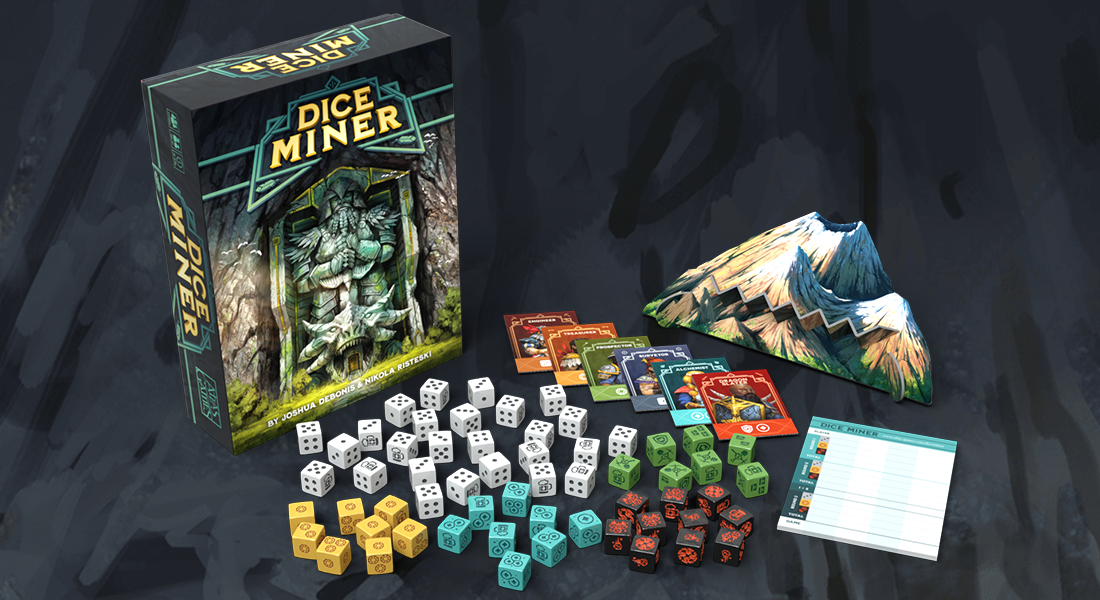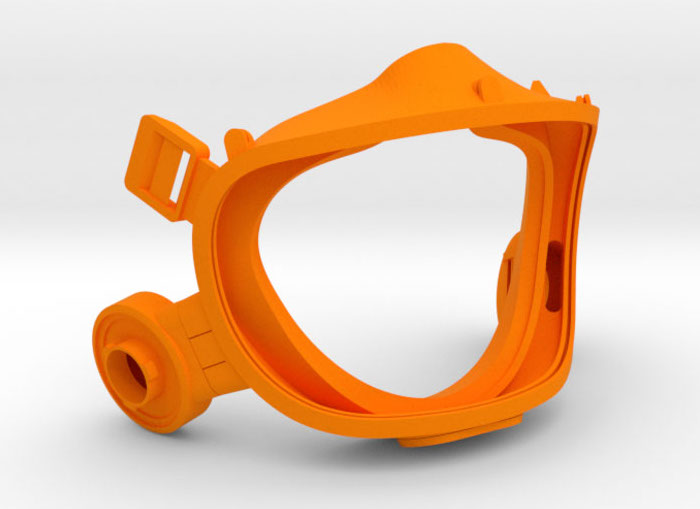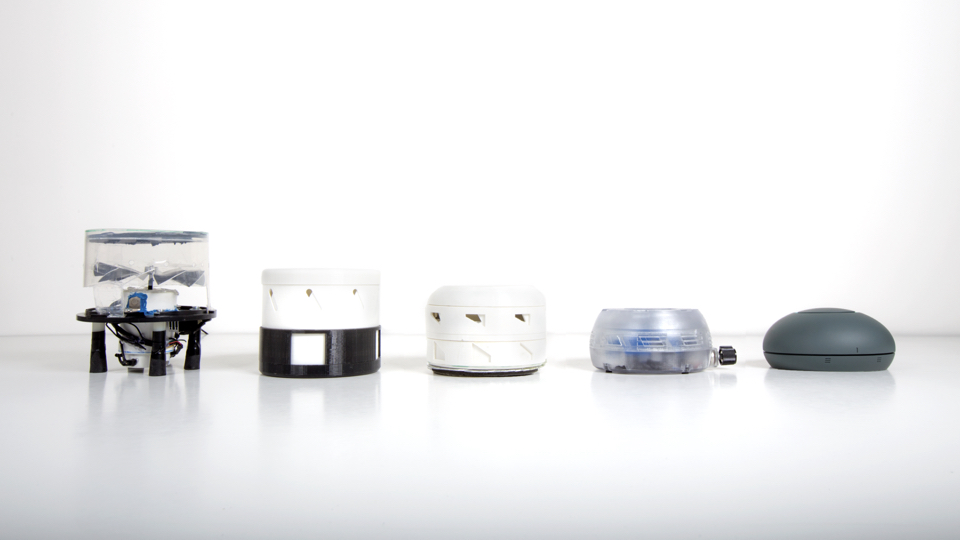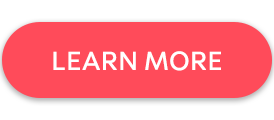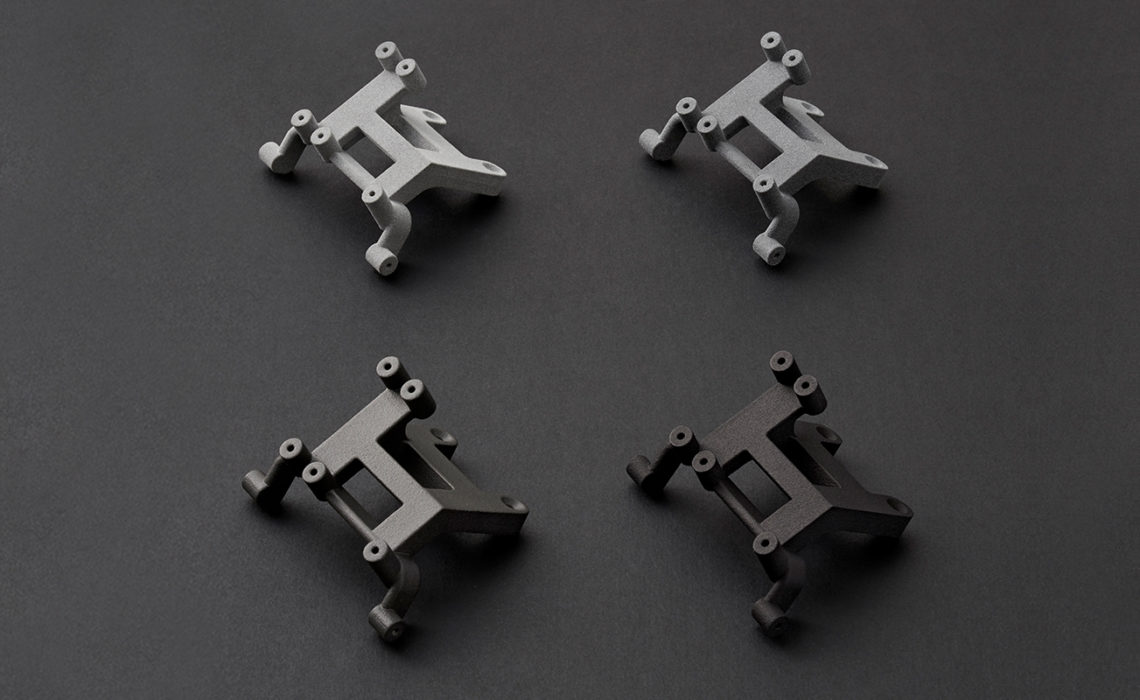
Rapid prototyping can, put simply, change the way you do business. Not only does employing 3D printing in the development process speed up the time-to-market of a new product, but it can save money and headaches. This guide will lay out how and why rapid prototyping can enhance your new product development — and how Shapeways can help.
What is rapid prototyping?
Rapid prototyping, to put it simply, takes you from napkin sketch to final product rapidly. A major bottleneck in the product development cycle is in prototyping. Traditional prototyping workflows often include outsourcing the creation of each prototype, waiting weeks — and spending significantly — for every new iteration, however tweaked or overhauled design changes may be. With rapid prototyping, those weeks between iterations may become days, taking months or years for standard prototyping cycles down to weeks, and getting your new product to market in a much more agreeable timespan.
What Is 3D Printing / Additive Manufacturing / Rapid Prototyping?
Rapid prototyping today often means bringing in 3D printing technologies — or are they rapid prototyping processes, or is that additive manufacturing? It may help to understand just what additive manufacturing is (and Shapeways has a guide for that!) and how these technologies fit into the prototyping workflow.
What Is Additive Manufacturing?
Additive manufacturing (AM) is a digital manufacturing process in which a CAD model is used to create a solid object. A variety of technologies are defined as being additive, as these processes add material over the course of the build, rather than subtracting it as seen in many traditional manufacturing methods (e.g., CNC milling). Materials are deposited, often in a layer-by-layer process, using a 3D printer to build up the geometry of the model in three dimensions. AM processes can handle a variety of metals, from simple plastics to various metal alloys, from food pastes to biomaterials.
What’s The Difference Between 3D Printing, Additive Manufacturing, and Rapid Prototyping?
There are several ways of referring to these technologies, most commonly “3D printing” or “additive manufacturing,” though “rapid prototyping” is also used. For a fuller explanation, we dive into technology terminology in this article, but in short:
3D printing and additive manufacturing are often used interchangeably to refer to effectively the same processes. Additive manufacturing is recognized as a more industrial term, and tends to encompass expensive professional machinery being used in applications from prototyping to end-use product production. 3D printing can refer to the process of layer-by-layer building of an object, or more generally to refer to any usage of this technology, from hobbyists using inexpensive desktop systems to professionals using industrial equipment. Rapid prototyping was one of the first terms used for these technologies, which in the 1980s were geared toward the rapid production of prototypes and for a few decades so dominated usage that this application was synonymous with the tech itself.
For the purposes of this guide, 3D printing is a technology suite used for the application of rapid prototyping.
Rapid Prototyping Materials
Now that we know what rapid prototyping is, a good follow-up question is straightforward: What are some of the material options for rapid prototyping with 3D printing?
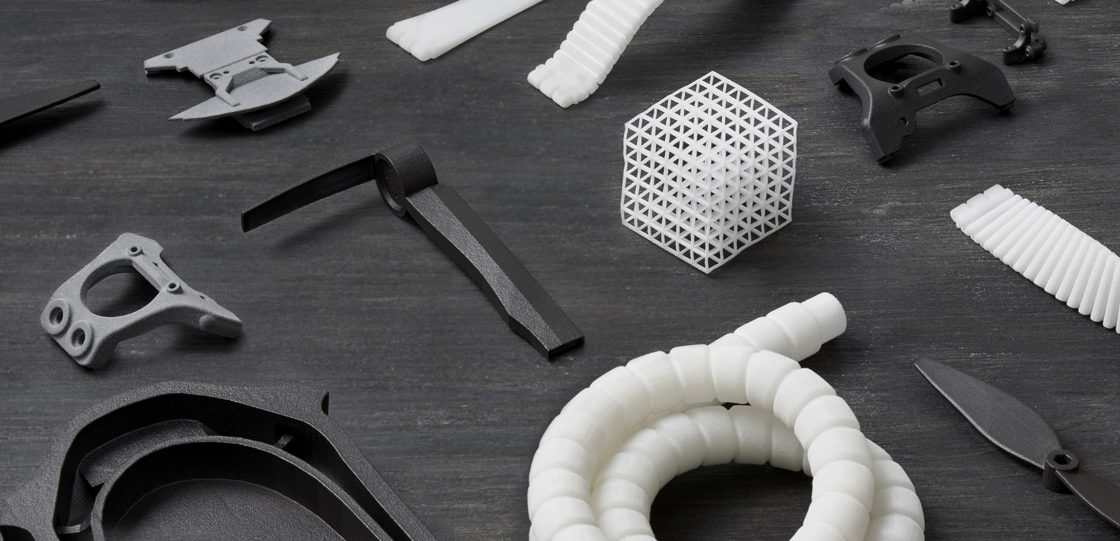
When using 3D printing from prototype to production, the same technology can be used throughout the product development cycle. That does not, however, mean that the same materials are necessarily the best choice at every step. Early stages of prototyping may focus more on speed and rough idea than on a “final look” quality, so inexpensive plastics are often the best fit here, when several iterations may be made in fairly quick succession. Each refinement in prototype may call for a better-quality material, and staging material selections can help cut costs, keeping the finer-detail options for only later-stage planning.
During initial prototyping stages, a low-cost material can be used with low infill and thicker layers, lowering material costs and speeding print time to create a rough-and-ready first look at a new design. Whether plastic or metal, 3D printing can quickly fabricate a product that will come to look and feel just like the desired end result.
By starting with a low-cost plastic material and moving after a few iterations to metal, for example, a product that will eventually be conventionally fabricated using metal can come to market much more quickly than would be the case by machining each iteration — a traditional pathway that ultimately costs much more in terms of time, money, and labor.
Material options in additive manufacturing may not run the full gamut available in traditional technologies, but new formulations are becoming available all the time.
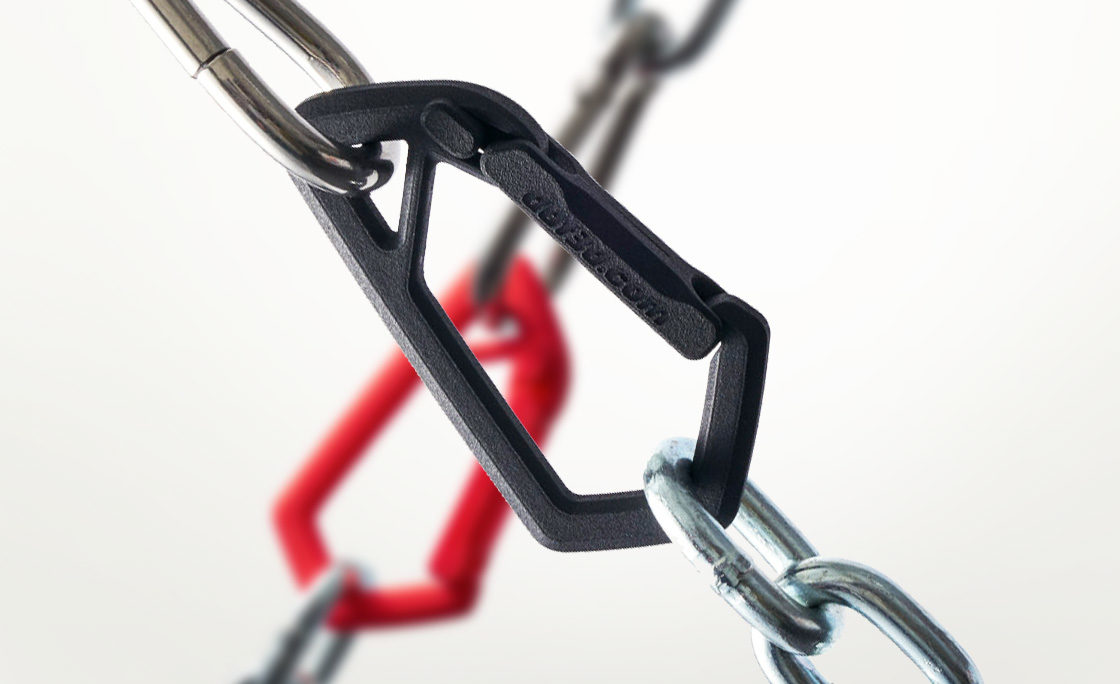
Among Shapeways’ broad 3D printing materials portfolio, the most commonly used for rapid prototyping is Nylon 12 (Versatile Plastic). This material is a durable nylon plastic that can be used for a wide range of applications, both for prototyping and for end products. The SLS material can be 3D printed thin for flexibility — think hinges and springs — or thicker to build up structural components. Nylon 12 is affordable, has the fastest lead time (shipping as quickly as three business days from order), and is available in a wide range of colors. It can also be bonded with other materials, electroplated, or otherwise adaptable to your specific application’s needs.
Other well-suited offerings for rapid prototyping include Multi Jet Fusion Plastic materials (PA12 and PA12 Glass Beads) for added stiffness and durability, and SLA (Accura 60, Accura Xtreme, Accura Xtreme White 200) for fine details.
For more in-depth information on any of these materials, see Shapeways’ Materials Guide (pdf).
Benefits Of Rapid Prototyping
That’s all well and good, but when it comes down to it, is there an actual business case for prototyping with 3D printing?
This question gets a resounding YES! Using 3D printing from product concept to creation can help reduce the time and costs needed to get your new idea to market and into the hands of your eager customers.
In broad strokes, the product development cycle includes the need for physical prototypes at several stages of design including:
- Concept
- Assembly / Fit
- Functional
- Life Test
- Regulatory
3D printing these different iterations offers the benefits of digital manufacturing — think speed, agility, and lowered costs for one-off production — to every stage of product development.
Taking a 3D model directly to a 3D printer for fabrication speeds the process of prototyping. Digital models can be made quite quickly using a variety of 3D printing technologies, removing the needs for many steps in other, more traditional fabrication technologies. No tooling is needed, for example, nor is there a waiting period while molds are made and filled. It’s also much faster and more precise than hand-fabricating.
Following review of each prototype for the parameters necessary, subsequent versions can be made quickly to get to just the right look and fit before moving into more finessed prototypes. Tweaking a digital file to adjust for better look, fit, appropriate scale, or other needs can be done quickly, with a next iteration 3D printed potentially same-day.
Some 3D printing options, like HP and Carbon, enable the capability of prototyping and producing on the same system or family, as different materials and parameters can move ever closer to a market-ready product. By iterating on the same system that will be used for the final product, quality control can be kept in-hand every step of the way, meaning there are no surprises when the first end-use production begins.
When working with a service bureau like Shapeways, additional expertise and access to different technology suites comes into play for a high-quality experience every step of the way.
Shapeways’ rapid prototyping services offer:
- Fast Turnaround
- Variety of Materials
- Reliable Quality
We go over the full business case for 3D printing prototypes in this article for more depth.
Rapid Prototyping Pricing
Once the decision has been made to rapid prototype using 3D printing by engaging a service bureau, one large question remains: pricing.
Shapeways lays out clearly its pricing structuring, from engaging a designer to simply uploading a model for an instant quote.
Among the considerations for our pricing are:
- Materials:
- Material Volume
- Machine Space
- Number of parts
- Production
- Bounding Box Volume
- Support Volume
- Manufacturing Speed:
- Priority
- Economy
- Rush
- Shipping cost
- Taxes
Bulk pricing is also available for large orders. For full details, see our pricing overview here.
Customer examples
As popular wisdom holds that “show, don’t tell” is the best way to prove a point, we’d like to share some examples of customer rapid prototyping achieved through the Shapeways platform.
Just a few of our customer successes include:
Atlas Games
Innovative tabletop gaming mainstay Atlas Games has plenty of decades of experience in creating card games, board games, and roleplaying games. The company turned to Shapeways to bring its new dice-based game to fruition for a release through Kickstarter, creating a realizable visual of Dice Miner for potential backers to see prior to sale. The 3D printed prototypes of game pieces helped carry the new game from early design through a playable final product.
Jeff Tidball, Chief Operating Officer of Atlas Games, says of working with Shapeways: “Dice Miner’s Deluxe Edition will have a plastic PVC mountain, so we used Shapeways to prepare early prototypes of that component. We used Shapeways for two purposes. First, to playtest using components as close as possible to the final version, to make sure they performed as we expected at the table. Second, to evaluate their producibility while holding physical objects, as opposed to needing to evaluate them only on screen, or in our imaginations.”
LuminoGO
Using 3D printing to prototype a comfortable, reusable new face mask helped the LUMINO team quickly respond to pandemic needs. Developing the LuminoGo mask for full facial visibility as well as wearer safety features including UVC light or an integrated filter to sterilize breathing air was no mean feat, requiring significant prototyping — and the team turned to Shapeways to 3D print almost every part of the mask to get it all ready for safe wearing on the market.
LUMINO CTO Bernhard Neuwirth says: “Almost all parts are 3D printed. The main reasons for us have been fast prototyping, fast production, choice of materials and colours, which is important for branding and personalization. The big difference with competitors is that we have already working prototypes.” And: “Shapeways was helpful in every way from early on in the project. I especially liked the very fast production options, the choice of materials and the amazing quality of the product. Traditional production methods would be injection moulding. We will certainly do that in the future. Meanwhile we produce already, while optimising the product. We use 3D-print as a production method.”
SNOOZ
Working with Shapeways to 3D print dozens (and dozens and dozens) of designs to reach the ideal sound system, the SNOOZ team cut substantial time and costs in their production process by rapidly prototyping. The savings over traditional machining was major enough that this Las Vegas-based startup has now been working with Shapeways for more than five years — and still has more product work with us in the pipeline for the next devices.
SNOOZ CTO and Co-Founder Eli Lazar explains: “Without 3D printing, I am not sure we could have ever developed a viable product, or at least one that people actually liked. Our fan blade is entirely custom, and small details make a huge difference. A 1-degree extra twist in the blades or 1mm extra length or width of the blades, and it generates a whole different set of tones. You can use software to simulate the acoustics for a fan blade design, and we did do quite a bit of this. However, these simulations can take up to a few weeks to run, and they are really not accurate enough to predict the subtleties that we were interested in. The best way I can explain this is that a stringed piano is always acoustically superior to a digital keyboard, because the timbre (perceived sound quality) of real sound is just better than any digital replica. With that said, we had to make actual parts. Having parts machined was always an option too, but from our experience, that is 10-25x higher cost, and perhaps 10x slower, which was just not an option for us.”
Please contact us today to learn more about our offerings and how we can help you every step of the way for your next project.


